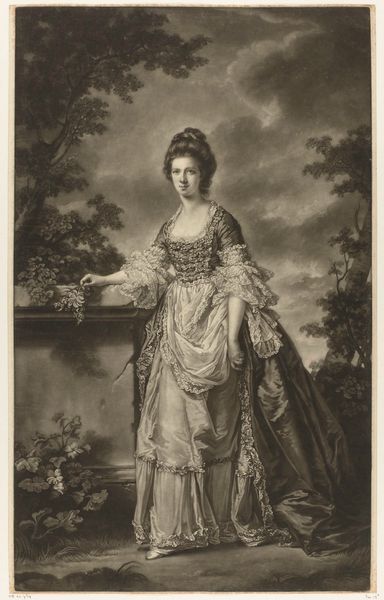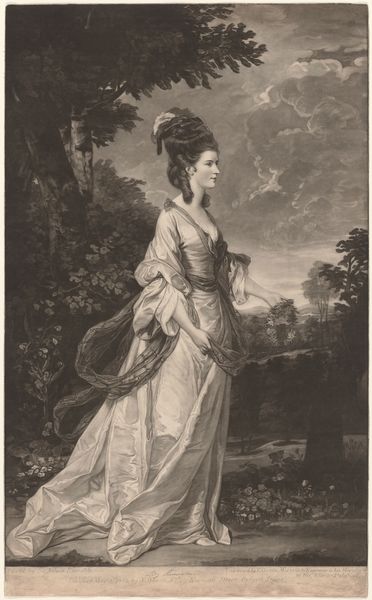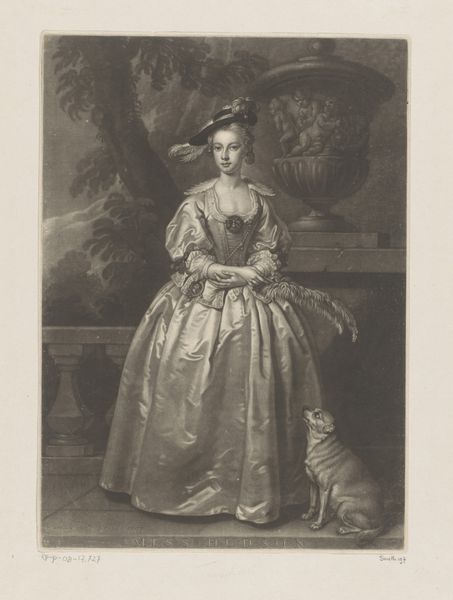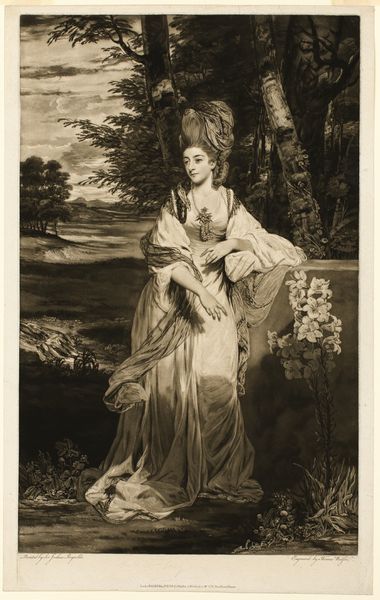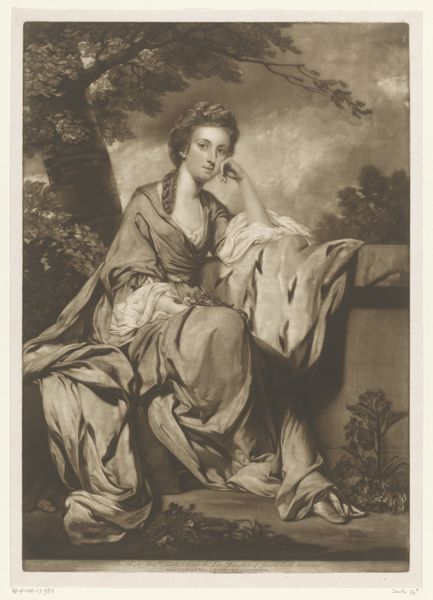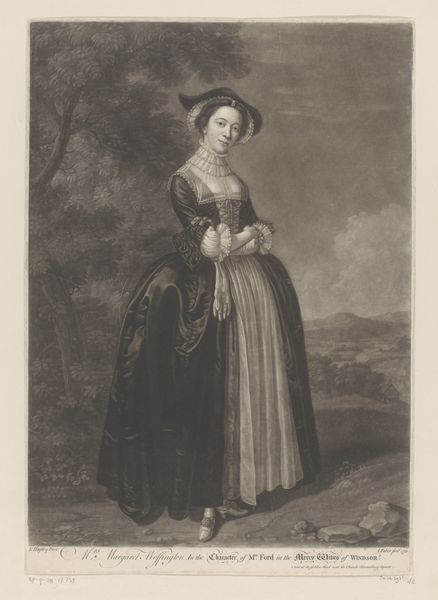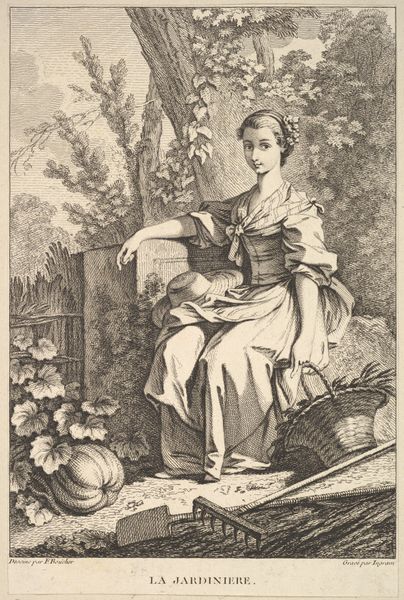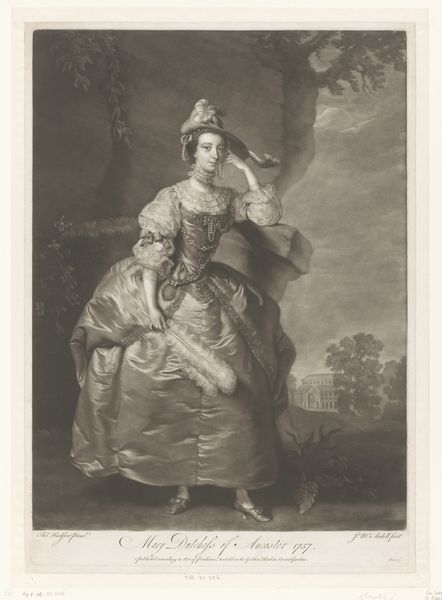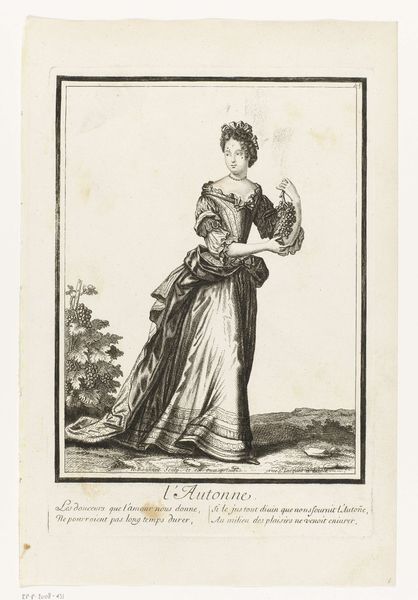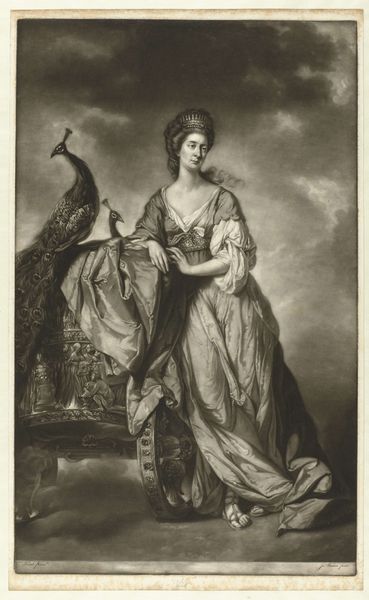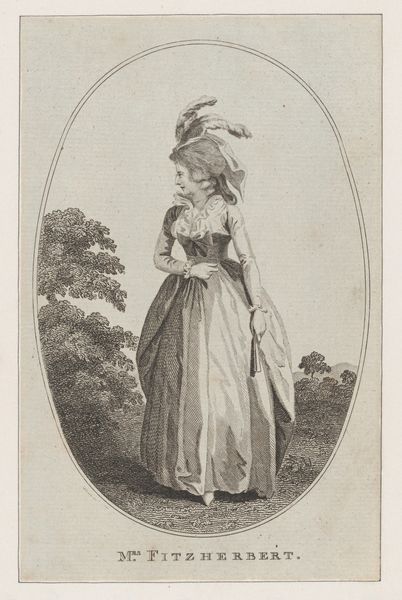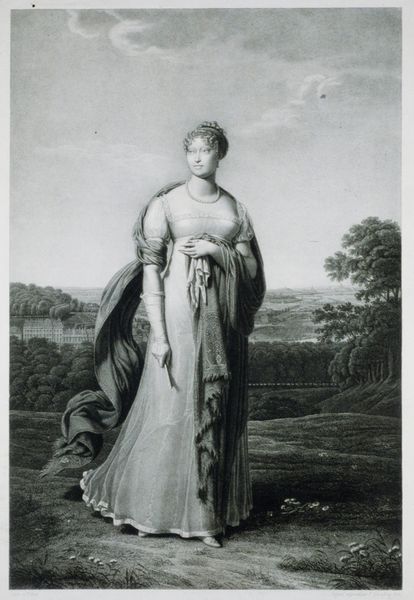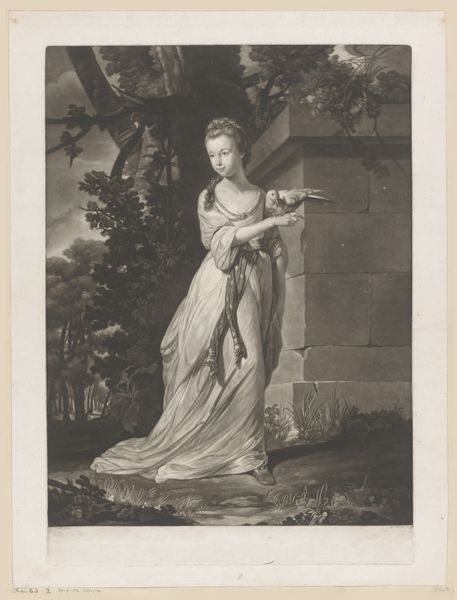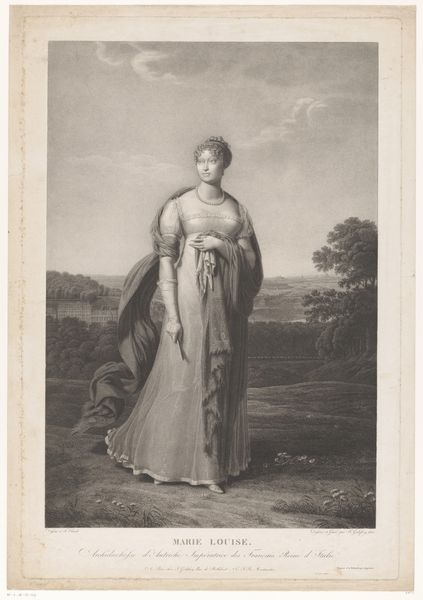
drawing, print, paper, engraving
#
portrait
#
drawing
# print
#
charcoal drawing
#
figuration
#
paper
#
england
#
genre-painting
#
engraving
Dimensions: 620 × 382 mm (image); 621 × 385 mm (plate); 655 × 425 mm (sheet)
Copyright: Public Domain
Curator: Immediately, I am struck by the serene pastoral feel of this composition, the delicate rendering of light... it possesses a captivating gentleness. Editor: That's certainly there, let's add some context. We're looking at "Mrs. Pelham Feeding Her Chickens," an engraving created in 1775 by William Dickinson after an earlier drawing by Gainsborough. It captures a member of the British gentry engaged in what appears to be a commonplace activity. Curator: Commonplace? I wonder. While seemingly simple, there's a decided artificiality to the scene. Her elegant dress and poised demeanor stand in stark contrast to the earthy activity. What's your interpretation of her placement, seemingly between the darkened forrest left, and bright farm house beyond? Editor: Ah, precisely. It speaks to the complicated social dynamics of the 18th-century British aristocracy. Genre scenes like this, although depicting everyday activities, often served to reinforce ideals of domesticity and class status. Presenting the landowners as benevolent figures caring for their land, their domain and their produce: they are harmoniously positioned, if you will. Curator: From a formal perspective, Dickinson’s technical skill is masterful. The velvety blacks and nuanced gray tones are achieved through meticulous engraving, building up depth and volume. Editor: Indeed, notice the way light catches her face and the delicate folds of her gown – details that bring a lifelike quality to the printed image. This almost "painterly" effect enhances its appeal to the wealthy and powerful classes. Was this widely shared and exhibited at the time? Curator: These prints, readily circulated amongst the elites, were tools for solidifying and displaying the desired persona of the patrons themselves: they are staged authenticity to garner political support. Think how powerfully persuasive images would operate as currency, especially to non-urban and therefore less affluent or influential citizens. Editor: Ultimately, this print offers an important lens for examining how artistic representation played a crucial role in constructing and upholding societal values and the cultural status quo. Curator: Agreed, it’s not merely a charming image; it's a carefully constructed piece of propaganda with an interesting dynamic arrangement of formal features.
Comments
No comments
Be the first to comment and join the conversation on the ultimate creative platform.
